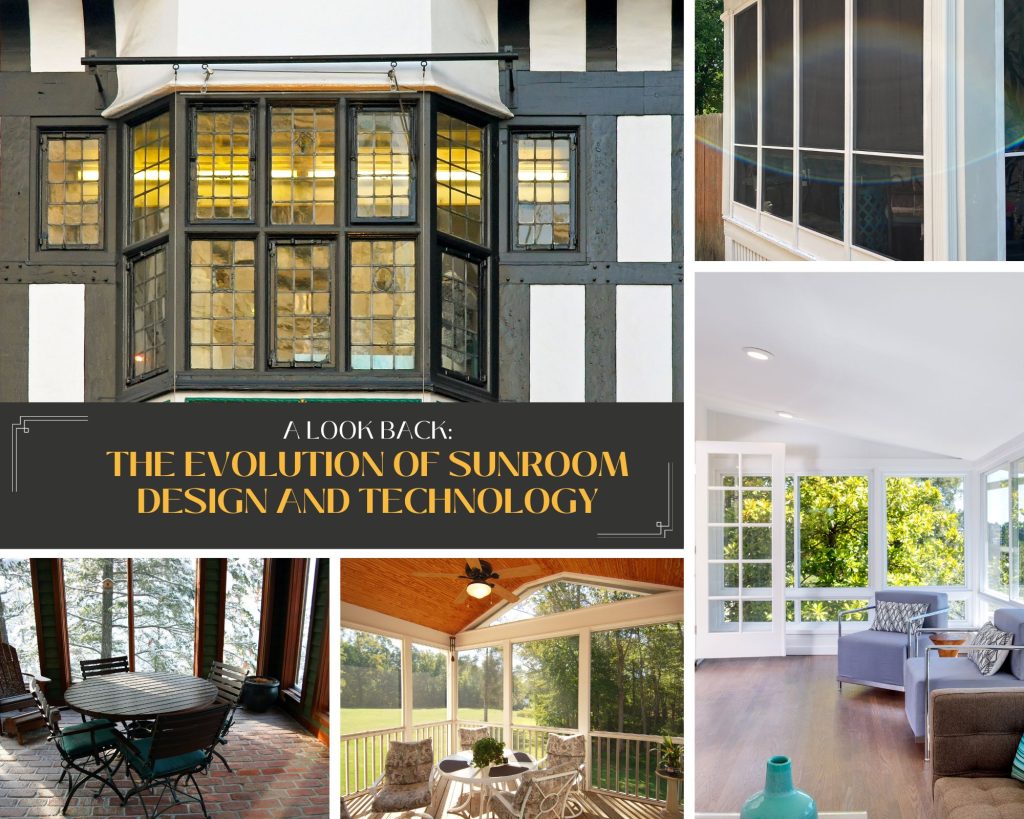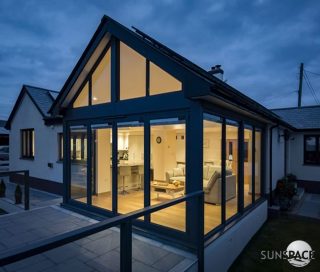A Look Back: The Evolution of Sunroom Design and Technology

The sunroom, once a humble space for enjoying a bit of the outdoors without leaving the comfort of your home, has come a long way in terms of design and technology. What started as a simple glass-enclosed porch has evolved into a multifunctional, energy-efficient, and technologically advanced living space. Let’s take a trip down memory lane to explore the fascinating evolution of sunroom design and technology.
Early Beginnings
Sunrooms have been around for centuries, with their roots traced back to the conservatories of European nobility during the 17th century. These early sunrooms were grand structures, primarily built for cultivating exotic plants. They featured large, single-glazed windows and ornate metalwork, allowing natural light to fill the space.
The Victorian Era
The Victorian era saw a surge in the popularity of sunrooms among the British upper class. These sunrooms, often called orangeries, were characterized by intricate ironwork, large windows, and a wealth of ornate detailing. They were a symbol of status and were used for both gardening and relaxation.
The American Porch-Enclosure
In the United States, sunrooms gained popularity in the late 19th century. Homeowners were keen to enjoy the health benefits of fresh air and natural light without exposure to the elements, leading to the rise of porch enclosures. These early American sunrooms featured large, screened windows and served as a transitional space between the indoors and outdoors.
The Mid-20th Century Boom
The mid-20th century marked a significant change in sunroom design. With the advent of insulated glass and improvements in construction materials, sunrooms evolved into spaces that could be used year-round. They were no longer limited to fair-weather use, but rather, they became true extensions of the home.
Modern Sunroom Design
Today’s sunrooms have undergone a dramatic transformation. They come in various styles, including conservatories, solariums, and screen rooms. Sunrooms are no longer limited to rectangular shapes; contemporary designs feature curved, cathedral-style roofs and floor-to-ceiling glass walls. This design evolution provides homeowners with an array of options to choose from, ensuring that their sunroom complements the aesthetics of their home.
Technological Advancements
The integration of technology has been another major advancement in sunroom design. Modern sunrooms often include features like electrical outlets, ceiling fans, and integrated heating and cooling systems. Smart home technology can also be incorporated, allowing homeowners to control temperature, lighting, and even window coverings with the touch of a button.
Energy Efficiency
The focus on sustainability and energy efficiency has influenced sunroom design. High-performance insulated glass, efficient heating and cooling systems, and building materials have made sunrooms more energy-efficient. Homeowners can enjoy their sunrooms year-round without significantly impacting their energy bills.
Versatile Functionality
Today’s sunrooms are versatile spaces, serving various purposes. They can function as a home office, a cozy reading nook, a dining area, or even a workout space. The flexibility of modern sunrooms ensures they meet the diverse needs and lifestyles of homeowners.
The Future of Sunrooms
As technology and design continue to advance, we can anticipate more innovations in sunroom construction. Solar-integrated glass, energy-producing sunrooms, and even more sustainable building materials may shape the future of sunroom design.
In conclusion, the evolution of sunroom design and technology has transformed these spaces into versatile, comfortable, and energy-efficient extensions of our homes. The rich history and promising future of sunrooms make them an attractive addition for homeowners looking to bring the beauty of the outdoors inside. If you’re considering adding a sunroom to your home, it’s worth exploring the latest design and technology options to create a space that perfectly suits your needs and style.

